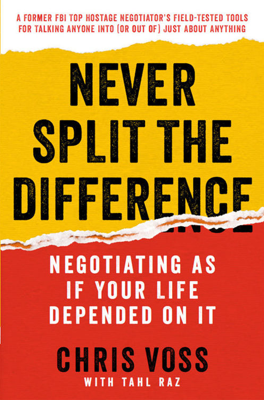Don’t Feel Their Pain, Label It
Don't Feel Their Pain, Label It
Chris Voss, drawing on his experiences as a negotiator, emphasizes the importance of addressing emotions directly rather than avoiding them. He argues that understanding and influencing emotions are key strategies in negotiation.
Key Concepts Introduced
Tactical Empathy: Voss describes tactical empathy as the ability to recognize and vocalize the perspective and feelings of the counterpart. It goes beyond simple empathy, by not only understanding but also using that understanding strategically to steer the negotiation.
Labeling: This technique involves acknowledging and naming the counterpart's emotions to diffuse their impact and build rapport. Labeling acts as a tool to shift discussions from emotional to more rational, productive dialogues.
Emotional Intelligence in Action: Voss recounts a situation from Harlem where he successfully used tactical empathy and labeling to coax fugitives out of an apartment by acknowledging their fears and concerns, resulting in a peaceful surrender.
Strategies for Effective Negotiation
Neutralizing Negative Emotions: Labeling can transform negative emotions by bringing them into the open and discussing them. This process moves brain activity from emotional centers to areas associated with rational thinking.
Reinforcing Positive Emotions: Similarly, positive emotions and dynamics can be reinforced through labeling, encouraging more cooperative behavior from the counterpart.
Importance of Reflective Listening: Effective negotiators use active listening to detect subtle emotional states in their counterparts, which can be critically revealing and used to guide the negotiation.
Practical Empathy Techniques:
- Use labels like "It seems like..." and "It sounds like..." to identify and articulate emotions.
- Avoid using "I" in labels to keep the focus on the counterpart and reduce defensiveness.
- Use tactical silence after labeling to let the counterpart absorb and react, enhancing the negotiation process.
Application in High-Stress Scenarios
Voss emphasizes the use of tactical empathy and labeling in various high-pressure negotiations, including hostage situations and high-stakes business deals. These strategies are effective in de-escalating tension and fostering a more collaborative environment.
Impact of Tactical Empathy and Labeling
These techniques help in making the counterpart feel seen and heard, which is crucial for effective negotiation. By understanding and addressing the underlying emotions, negotiators can create trust and pave the way for mutually beneficial outcomes. Tactical empathy is highlighted as a powerful tool, not just for resolving conflicts but also for connecting deeply with others.
